Top 10 Java Trends to Keep Your Eye On in 2023
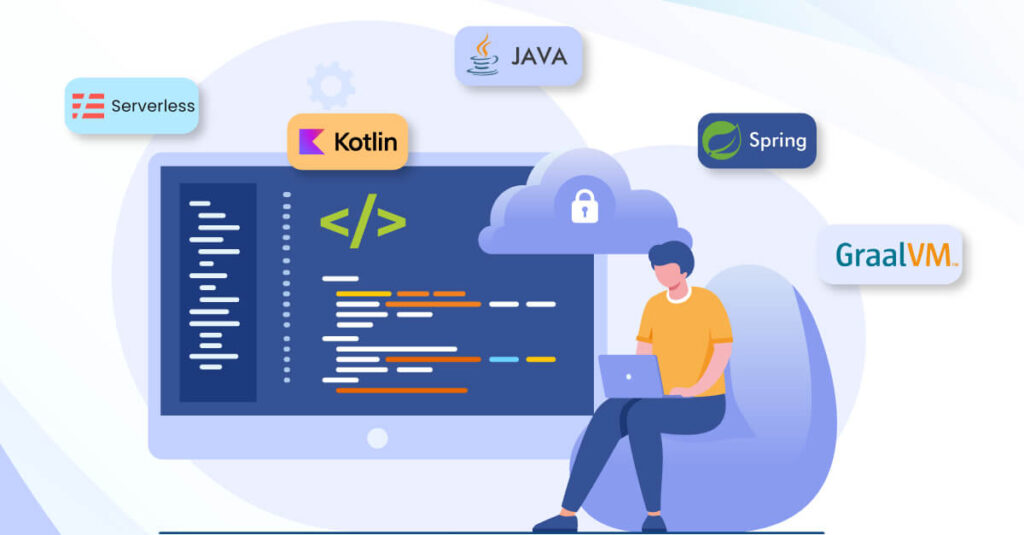
Java technology and Java web frameworks have made remarkable advancements in recent years. Their progress is due to strong community support, periodic performance improvements, and security enhancements.
Java frameworks support libraries and web frameworks, making it easier for developers to work with the latest Java technologies. Java has cross-platform compatibility, which allows code written once to be run on any platform. Currently, Java and frameworks in Java consistently rank among the top five technologies.
The evolving landscape of Java technology
To keep up with the evolving technologies of Java, developers must stay passionate about including new features in their implementation strategies. It’s essential to stay updated and enthusiastic about adopting these advancements in their coding practices.
Let’s explore the Java 10 trends 2023, which will assist developers in writing code and deploying applications more effectively.
Here are the latest Java technologies trends in Java:
Continued Growth of Spring Boot
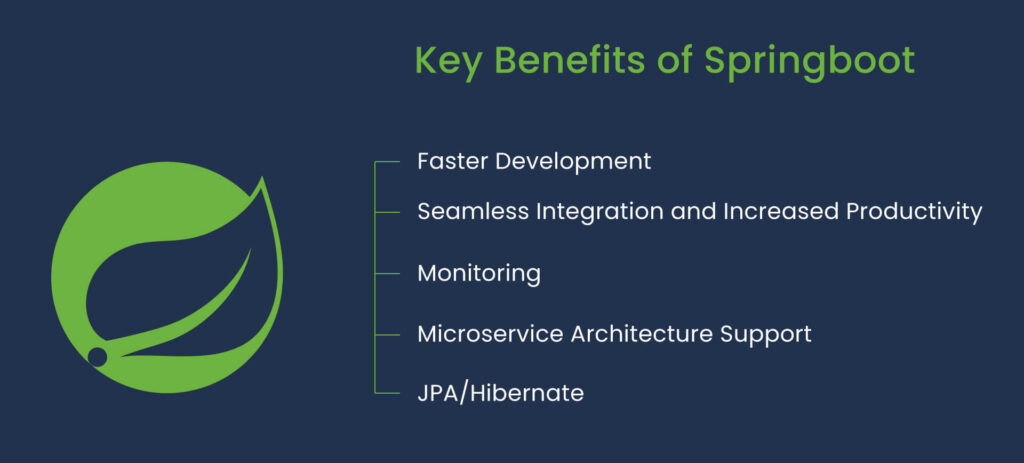
Spring Boot is the most popular Java Framework, widely used in modern Java technologies. The Spring web framework supports the Java 17 version as well as support advanced Java features.
The key benefits are:
- Popularity among developers: Spring Boot framework’s popularity among developers is because it’s user-friendly for development, server configurations, and deployment configuration. Recent versions introduced observability, reactive programming, circuit breaker, fault tolerance, config server features, and many other features which make web application development easier.
- Rapid development and Micro-service Architecture support: Spring Boot, a powerful framework for Java technologies, streamlines the configuration, dependency injection, and data source setup process. It eliminates the need for manual handling of these tasks, enabling developers to save time and effort while delivering faster results. Micro-service is nothing but breaking the monolithic architecture into small pieces in RESTful web services. It provides loosely coupled services.
- Seamless Integration and Increased Productivity: Spring Boot enables smooth integration with third-party applications and multiple data source configurations. Developers can effortlessly connect different systems and efficiently manage various configurations. This streamlined integration process boosts productivity and empowers developers to accomplish more.
- Monitoring: The monitoring feature helps to identify and debug the application issue. The developer needs to add configuration to enable the Observability feature. It has a micrometer to track the application logs, and Zipkin will help to show them on the dashboard.
- JPA/Hibernate: The latest version of Hibernate brings multiple changes that simplify development. It introduces features such as the Jakarta Persistence API, support for UUIDs, numeric functions, date-time functions, extract functions, and more. These additions make SQL querying and configuration easier.
Furthermore, these advancements work seamlessly with Java 17 and the latest Spring Boot version (3), ensuring developers can make the most of these improvements without compatibility issues. This has contributed to the popularity of the framework among developers.
Adoption of GraalVM
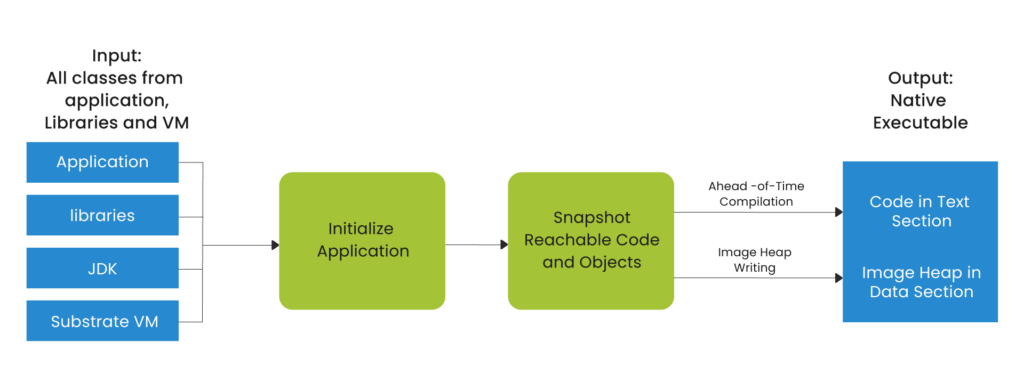
Improved performance:
GraalVM helps Java programs run better and also works with other languages like JavaScript, Python, and Ruby. Its distinct ability to convert Java code into highly optimized code enhances the speed of launching and improves the overall performance. With its support for multiple programming languages, GraalVM opens up new possibilities for developers to create high-performing applications in the technologies Java ecosystem.
One of the critical features of GraalVM is its ability to perform ahead-of-time (AOT) compilation, which translates Java bytecode into highly optimized machine code before execution. This enables faster startup times and improved overall performance compared to traditional just-in-time (JIT) compilation.
GraalVM is an advanced technology that enhances the performance of Java and other languages. It is specifically designed to create smaller and faster standalone programs, making it a valuable tool for running the latest Java technologies.
Polyglot capabilities:
GraalVM enables polyglot capabilities, allowing developers to write code in various languages such as Java, JavaScript, Python, Ruby, and more, and execute them within a single runtime environment. This simplifies development, saves time, and boosts efficiency by providing a unified platform for working with different languages.
The Rise of Quarkus
Native compilation and faster startup times:
Quarkus is a Java framework that enhances application performance, developer productivity, and resource efficiency. It achieves native compilation and faster startup times, reducing both the time it takes for applications to start and the memory usage. Quarkus also supports micro-services and serverless clouds and provides a wide range of extensions for seamless development. Additionally, it includes a convenient live reload feature that eliminates the need for frequent application restarts, enabling faster development.
Optimized for containerization and cloud deployment:
Quarkus is optimized for containerization and cloud deployment. It simplifies the process of deploying and managing applications in cloud-native environments. By providing built-in Docker and Kubernetes support, it enables easy integration and optimized resource usage. Developers can simplify operations, improve configuration management, and take advantage of efficient containerization and cloud deployment features.
Reactive Programming
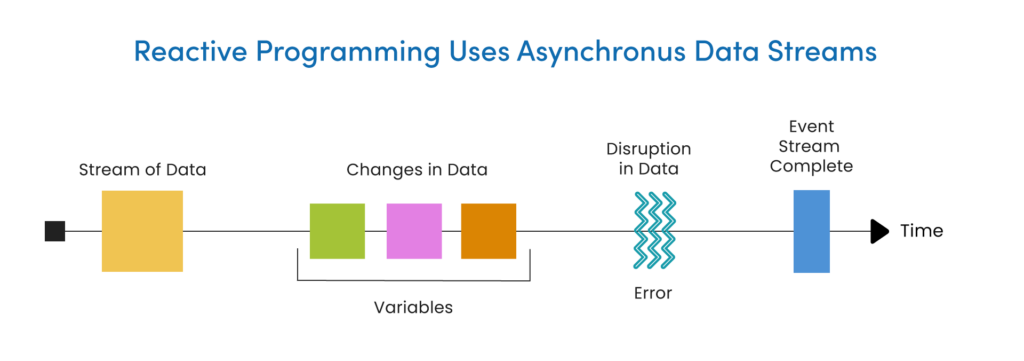
Project Reactor and RxJava:
When we get a large amount of data from a database, sometimes the data crashes or gets an out-of-memory exception. In this particular situation, we can add the backpressure to the data stream where we can configure the limitation on the database to get the essential data. With Reactive Programming, our application can seamlessly manage a high volume of requests while maintaining optimal resource utilization.
To implement Reactive Programming in Java, we can utilize various libraries such as Project Reactor and RXJava libraries, which provide the below feature
- Reactive Streams Compliance.
- Publisher-Subscriber Model.
- Backpressure Support.
- Functional Programming Style.
- Integration with Spring Framework.
Enhanced scalability and responsiveness:
Reactive programming offers asynchronous and non-blocking execution, providing a powerful alternative to the traditional top-down flow of code. Reactive programming uses futures and callbacks to provide a continuous flow of operations.
By adopting an asynchronous and non-blocking approach, developers can achieve enhanced scalability and responsiveness in their applications. This approach enables them to efficiently handle multiple tasks concurrently and optimize resource utilization.
In modern Java web framework applications, efficiently handling multiple requests is crucial. Reactive programming uses event-driven programming streams to address this, enabling each request to be processed in an asynchronous way on separate threads. By implementing this approach, each thread becomes available to handle incoming requests and generate timely responses.
Java Module System
Modularization of Java applications:
Code reuse and optimization are emerging Java trends that are essential for building efficient and maintainable applications in programming. The Java module system is a powerful feature that enables developers to achieve code reduction and reuse across multiple modules.
In Java development, the module system empowers developers in the modularization of Java applications. It allows them to create packages that promote code reusability and minimize application complexity. By organizing classes and interfaces into modules, developers can easily share and utilize them across different parts of their applications, eliminating the need for duplicating code. This modularization approach enhances code reusability and simplifies maintenance, making it easier to manage and evolve Java applications.
Furthermore, the module system provides a structured approach to managing module dependencies. It ensures that all required dependencies are resolved correctly during compilation and runtime, preventing any missing or incompatible dependencies. This not only enhances the overall stability and reliability of the application but also facilitates modular development and simplifies the management of complex projects.
Improved maintainability and performance:
The Java module system is designed to maintain backward compatibility with existing Java code, ensuring improved maintainability as well as performance. Developers can gradually migrate their applications to the module system by modularizing existing codebases. This approach allows for the continued use of existing libraries and frameworks within the modularized application, facilitating a smooth transition while enhancing the maintainability and performance of the application.
Kotlin’s Growing Influence
Interoperability with Java:
Kotlin is a programming language that runs on Java Virtual Machines and is used for server-side or client-side programming. Also, it provides cross-platform features that facilitate the creation of mobile applications for platforms like iOS and Android. With Kotlin, developers can create multiple libraries such as JVM libraries, JS libraries, and Native Platform libraries, ensuring flexibility in their development process.
Concise syntax and functional programming features:
One of the strengths of Kotlin is its interoperability with Java, allowing developers to leverage existing Java code and libraries seamlessly. Kotlin also supports functional programming, enabling developers to write concise, readable, and maintainable code.
- User-friendly simplicity: Kotlin stands out for its simplicity and user-friendly syntax, making it a preferred choice for developers. Kaitlin’s user-friendly nature fosters productivity and empowers developers to focus on solving problems rather than wrestling with complex syntax.
- Empowering Functional Programming: Kotlin’s concise syntax and strong support for functional programming empower developers to write maintainable code. With its declarative approach, complex operations become readable and less error-prone.
Kotlin is a powerful and user-friendly programming language that offers simplicity, cross-platform capabilities, as well as robust functional programming features. It is an excellent choice for developers of all skill levels, allowing them to build applications efficiently and effectively.
Machine Learning and AI with Java
Java libraries for machine learning:
Artificial intelligence (AI) is all about teaching computers to be smart like humans. It also involves making machines that can learn from experience, solve problems, understand and speak human language, and even see and recognize things as we do. For the teaching part of computers, developers can train and handle the data and provide the information without doing the programs every time.
As can be seen, the utilization of Java frameworks for implementing machine learning and AI algorithms has increased in recent years. Developers can use its features and resources to build intelligent systems and applications that leverage machine learning and AI techniques. Following are the libraries that provide the pre-built-algorithm to achieve machine Learning in Java
- Deep Learning Java Library
- Weka Library
- Advanced-Data Mining Java
- Apache Mahout
Increasing demand for Java developers in AI:
Java, with its support for big data processing using Apache Hadoop and Spark, proves invaluable in managing large datasets. Additionally, NLP libraries streamline language-related tasks like sentiment analysis and translation. Furthermore, machine learning plays a crucial role in enhancing biometric and private security.
At the present time, the increasing demand for Java developers in AI is evident as Java frameworks empower developers to build efficient AI solutions across diverse domains. By leveraging Java frameworks, developers can harness the power of machine learning, big data processing, and NLP to create transformative AI solutions that meet the growing demands of the industry.
Serverless Java
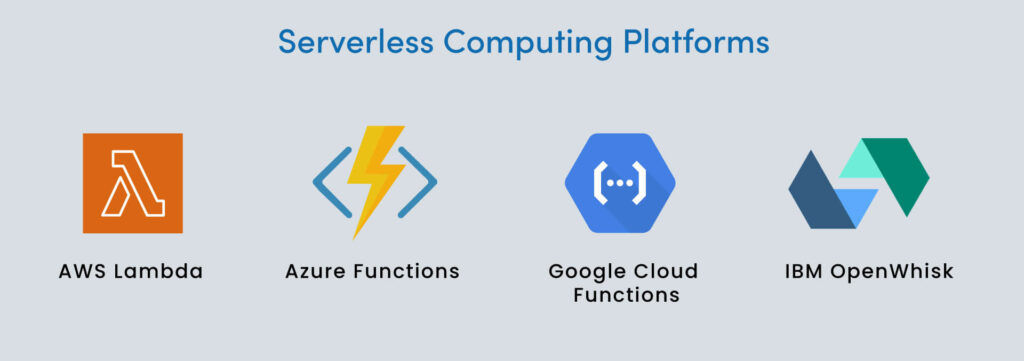
Java support on serverless platforms:
Modern Java web frameworks provide developers with the flexibility to shift their focus from server-side operations. With Java’s support on serverless platforms, developers can now fully concentrate on writing functions and code logic, without the need to manage server infrastructure.
Server infrastructure management is taken care of by cloud providers, freeing developers from these responsibilities and enabling them to focus on their core functions and code logic. This allows for greater productivity and efficiency in developing serverless applications with Java.
In the context of Java, serverless architectures can be implemented using serverless computing platforms such as:
- AWS Lambda
- Azure Functions
- Google Cloud Functions
Cost-effective and scalable Java applications:
Java’s robust ecosystem and extensive libraries make it an excellent choice for building cost-effective and scalable serverless applications. As a result with Java, developers can leverage existing frameworks and tools to streamline their serverless development process.
In serverless Java, developers can write functions using Java, package them into deployable units like JAR files, and easily deploy them to serverless platforms. This approach offers several advantages, including reduced operational overhead, automatic scalability to handle varying workloads, pay-per-use billing models, and the ability to build modular and event-driven applications.
By leveraging serverless Java, developers can focus on writing business logic, accelerate their development cycles, and effectively manage resources to optimize costs. As a matter of fact, Java’s combination of a rich ecosystem, scalability, and cost efficiency makes it a compelling choice for building serverless applications.
Java Development in the Cloud
Cloud-native Java applications:
In Java web development, application packaging is a transformative practice that simplifies the deployment process. It involves bundling all the necessary files and dependencies into a self-contained package ready for deployment.
With tools like Docker, developers can easily create and distribute these packages to popular cloud platforms, leveraging the Java support offered by these platforms. In addition to adopting application packaging, developers experience improved scalability, streamlined deployment processes, and enhanced flexibility.
Java support in popular cloud platforms
Following approaches supported by Java for application packaging:
- Containerization with Kubernetes: You can package your Java web application into Docker containers and leverage Kubernetes to handle container orchestration, scaling, and high availability.
- Cloud Platform Services: Cloud providers e.g. AWS, GCP, and Azure have services and tools for running cloud-based Java apps. Services like; AWS Elastic Beanstalk and Azure App Service can deploy and scale Java web apps without containerization.
- Serverless Architecture: Deploy your Java web app as functions using AWS Lambda or Azure Functions in a serverless setup. Package your application code into function units, which are automatically scaled and executed in response to incoming requests.
Java web apps can be packaged and distributed easily with tools like Docker, Kubernetes, cloud services, or serverless designs. This approach streamlines deployment, improves scalability, and provides flexibility in choosing deployment strategies.
Java Performance Improvements
Ongoing enhancements to the JVM:
Java 17 enhances the JVM, benefiting performance, security, and developer productivity. It introduces features like sealed classes and pattern matching, simplifying code. The Foreign Function & Memory API allows seamless integration with native code. With improved random number generation and garbage collection algorithms, performance is also boosted. These JVM enhancements empower developers to create efficient and secure Java applications.
Adoption of new garbage collection algorithms
Java 17 introduces notable improvements such as the Z Garbage Collector (ZGC), reducing pause times and enhancing application performance. The Java Flight Recorder (JFR) has also been enhanced for better monitoring and diagnostics.
In addition to these enhancements, optimizing memory usage is a key consideration in Java to achieve better performance. To make apps run better, developers can use less memory by creating fewer objects, reusing them, and using good data structures.
Moreover, leveraging multithreading and concurrency can unlock the full potential of Java applications. By allowing for parallel execution and efficient utilization of multiple threads, developers can significantly enhance performance and responsiveness.
Also, Java’s Just-In-Time (JIT) compilation plays a vital role in optimizing code execution. The JIT compiler dynamically optimizes the code during runtime, resulting in improved performance. Adjusting JVM flags and tuning parameters is crucial for optimal performance and JIT compilation. It should be tailored to the application’s needs.
Mobile Development

Java is a versatile language allowing developers to create mobile applications for Android and iOS platforms. While Java is the primary language for Android, iOS devices require a different approach using Objective-C.
Java’s popularity and lightweight nature make it an excellent choice for mobile app development. In addition it offers robust security, high performance, platform compatibility, easy testing, and cost-effectiveness.
Java developers can use popular frameworks to make mobile development easier and better. This gives them access to many tools and resources for creating impressive mobile apps.
Below are the popular and widely used Java frameworks:
- Play
- JHipster
- Vaadin
- Micronaut
Conclusion
In conclusion, staying updated with Java trends is crucial for software developers. These trends not only offer scalability, security, performance optimization, and accelerated development but also allow developers to create robust, adaptable applications in today’s dynamic technological landscape.
By adopting these latest Java technology trends; developers can meet increasing workloads, protect user data, enhance application performance, and streamline development. Furthermore, staying informed about the latest trends ensures adaptability to new technologies and delivers cutting-edge solutions that meet user expectations.
Frequently Asked Questions
Every six months there will be a new version released by the Java Team and sometimes it’s embracing developers to understand the features and implement it into existing development.
Businesses should make it a priority to stay updated with the latest technologies and also encourage a culture of continuous learning. Businesses can effectively leverage the potential benefits of Java by proactively staying abreast of the latest developments. They should also keep enhancing their skill sets to adapt to the evolving landscape. This commitment to staying current helps businesses enhance their technical abilities and drive innovation in their software development practices.
Adopting Java trends can bring several benefits for businesses. It enables them to remain informed about the newest technologies and tools. Additionally this results in improved technical abilities and greater productivity. These trends focus on improving performance, enhancing security, and making developers more productive, which ultimately helps businesses deliver better software solutions.
Overall, adopting Java trends helps businesses stay current, improve their work processes, and provide better solutions for their customers.





I am regular reader, how are you everybody? This piece of writing posted at this site is really nice.
For newest information you have to go to see web and on web I found this site as a finest site for newest updates.
I conceive you have remarked some very interesting details , appreciate it for the post.
Many thanks very much for the info. I have been looking for this for a while with Bing and it has been a true undertaking.
Utterly indited content material , Really enjoyed examining .
Thank you for sharing superb information. Your website is so cool. I’m impressed by the info that you have on this blog. It reveals how nicely you perceive this subject. Bookmarked this web page, will come back for more articles.
Very interesting details you have mentioned , appreciate it for putting up.
Thank you so much for a very intelligent and refreshing article. Great job!
You ought to indulge in a contest for just one of the best blogs on the internet. Let me suggest this site!
It’s rare knowledgeable folks with this topic, however, you sound like do you know what you’re speaking about! Thanks
Many thanks for this particular info I was basically browsing all Search engines to discover it!
I’ve been browsing online more than 2 hours today, yet I never found any interesting article like
yours. It’s pretty worth enough for me. Personally, if all website owners and bloggers made good content as you did, the web
will be a lot more useful than ever before.
Hi! I’ve been following your weblog for a while now and finally got the courage
to go ahead and give you a shout out from New Caney Tx!
Just wanted to mention keep up the excellent job!